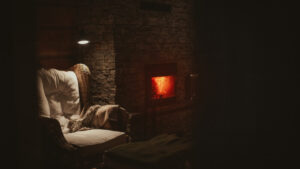
Top 10 Fireplace Tongs: The Best Picks Of 2023
In the realm of fireplace accessories, the importance of a robust and reliable pair of fireplace tongs cannot be overstated. These tools are not merely

The seemingly simple decision of choosing between short and long fireplace tongs can significantly impact your fire-tending experience. Each length offers distinct advantages and limitations, influencing factors like safety, control, precision, and comfort.

Whether you’re a casual fireplace user enjoying peaceful evenings by the fire or a seasoned enthusiast with a passion for maintaining the perfect flame, understanding the nuances of these tools is crucial.
This comprehensive guide will delve into the design features, practical applications, and overall user experience of both short and long fireplace tongs, assisting you in making an informed decision that aligns with your fire management style and needs.
Short Fireplace Tongs
Short tongs, typically ranging from 15 to 20 inches in length, are designed with precision and ease of use in mind. Their compact size allows for nimble movements and the exact positioning of logs and coals within the fireplace.
The design of these tongs often focuses on ergonomics, offering a comfortable grip and balanced weight that reduces hand fatigue during use.
This makes them particularly suitable for smaller or medium-sized fireplaces where space is limited and precise control over the fire is crucial. The shorter length allows users to apply greater force at the tip, providing a secure grip on logs.
This design feature is particularly useful for detailed fire management tasks like rearranging logs for optimal burning, adding kindling, or managing ember distribution.
Long Fireplace Tongs
Long tongs, which can be anywhere from 25 to 40 inches, are designed for reach and safety. The extended length keeps users further away from the heat, a crucial safety feature for larger fireplaces or when managing outdoor fires.
These tongs are typically built with sturdiness in mind, capable of handling the extra leverage required to manipulate logs at a distance. The design aims to strike a balance between weight and durability, ensuring the tongs aren’t too heavy or cumbersome to use, despite their extended length.
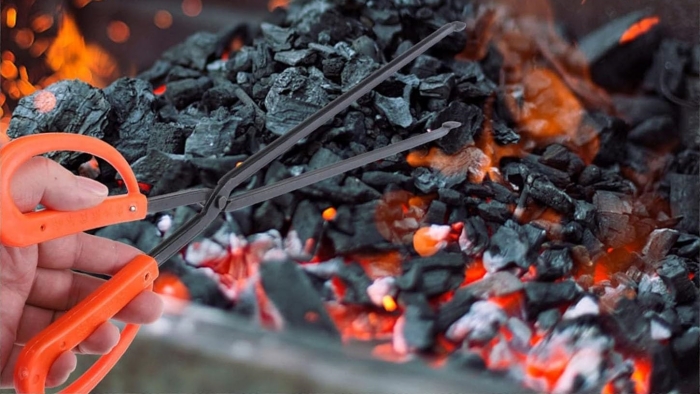
The control and precision offered by short fireplace tongs make them a preferred choice for detailed fire management. Their shorter length enables direct manipulation of the firewood, allowing users to make subtle yet effective adjustments to the fire.
This level of control is particularly beneficial in smaller fires or fireplaces where the arrangement of logs significantly affects the fire’s behavior. The ability to precisely place and adjust logs ensures efficient burning and helps maintain the desired fire intensity.
The shorter length also provides a mechanical advantage, requiring less effort to grip and move logs, thus enhancing control during use.
Long tongs, while less precise, offer a safer approach to fire management, especially in larger fireplaces or outdoor settings.
Their increased distance from the fire reduces the risk of burns and heat exposure but can make it challenging to achieve the same level of precision and finesse as with short tongs.
This can be particularly noticeable when placing smaller logs or arranging kindling. Nonetheless, for large and robust fires, the safety benefits of long tongs are a significant advantage, outweighing the reduced control and precision.
Safety and comfort are essential when working with fireplace tongs. Short tongs offer a safer option in smaller or enclosed spaces, reducing the risk of overheating or accidental burns. Their ergonomic design often results in more comfortable handling, particularly during extended use.
The lighter weight and balanced design of short tongs minimize the risk of overreaching or losing balance, common concerns when working in proximity to flames. Additionally, the shorter length reduces the likelihood of the tongs becoming unwieldy or difficult to maneuver, which can lead to accidents or mishandling of logs.
Long tongs provide safety through distance, keeping the user further from the flames and heat. This is especially important when managing large, hot fires where the risk of burns is higher.
However, the comfort level can decrease with long tongs due to their heavier weight and the need for extended reach.
Users may experience arm fatigue or require more physical effort to use the tongs effectively. Despite this, the safety benefits provided by the additional distance can be crucial, particularly for inexperienced users or in situations where a larger fire is being managed.
Short fireplace tongs are ideally suited for indoor environments, such as living rooms, dens, or spaces with smaller fireplaces. Their design and size make them ideal for fireplaces where detailed log placement is critical for maintaining the desired fire size and temperature.
These tongs are also beneficial for frequent use, as in homes where the fireplace is a primary heat source during colder seasons. The precision and control offered by short tongs make them the preferred choice for users who enjoy actively managing and tending to their fireplaces.
Long tongs are more appropriate for larger, open fireplaces, outdoor fire pits, or situations where a significant distance from the flames is required. Their extended length makes them suitable for larger and more intense fires, where safety is a priority.
They are also well-suited for less frequent, more occasional use, such as during social gatherings, outdoor events, or in scenarios where a large fire needs to be managed over an extended period. Their design is geared towards safety and practicality, making them a reliable choice for users who prioritize these aspects over intricate fire control.

Durability is an essential aspect of both short and long fireplace tongs. Short tongs, typically used more frequently, need to be constructed robustly to endure regular use and the wear and tear of handling logs.
Their maintenance involves routine cleaning to remove soot and ash and periodic checks for wear or damage. Proper storage away from direct heat or moisture is crucial for maintaining their condition. Regular care ensures that short tongs remain effective and safe for use over time.
Long tongs require materials that can withstand prolonged exposure to heat and the physical demands of managing larger logs. Their maintenance includes similar care to short tongs, with additional emphasis on ensuring their longer components remain straight and effective.
Storing them in a dry environment protects them from rust and corrosion, prolonging their usability. Checking for any signs of heat damage or structural weakening is also important, especially if the tongs are used infrequently but for managing large fires.
In the quest for the perfect fireplace tongs, understanding the differences between short and long tongs is crucial. Short tongs offer unmatched control and precision, ideal for smaller indoor fireplaces and active fire management.
Long tongs, on the other hand, provide safety and practicality, suited for larger fires and outdoor settings. Assessing your specific fireplace needs and preferences will guide you to the right pair of tongs, enhancing your fire management experience with a combination of safety, efficiency, and comfort.
How do different materials in fireplace tongs affect their performance?
Different materials in fireplace tongs can significantly impact their performance. For instance, tongs made of high-grade stainless steel offer excellent heat resistance and durability, ideal for frequent use. Forged iron tongs provide a rustic aesthetic and robust strength, but they may be heavier. Aluminum tongs are lighter and easier to handle, though they might not offer the same longevity as steel or iron.
Can the design of the handle affect the efficiency of fireplace tongs?
Absolutely. The handle design plays a crucial role in the efficiency of fireplace tongs. Ergonomically designed handles can provide a more comfortable grip, reducing hand fatigue and allowing for better control. Handles with heat-resistant coatings or materials also offer added safety, protecting hands from high temperatures.
Are there any specific features to look for in tongs for outdoor fire pits?
For outdoor fire pits, look for fireplace tongs with longer handles to maintain a safe distance from larger flames. Tongs with a sturdy build and rust-resistant coating are also beneficial for withstanding outdoor elements. Additionally, a locking mechanism for secure storage and transport can be a useful feature.
How often should fireplace tongs be replaced, and what are the signs of wear?
The lifespan of fireplace tongs depends on their material quality, frequency of use, and maintenance. Generally, tongs should be replaced if you notice significant wear, such as bending, loosening of joints, or deterioration of the gripping ends. Regular inspections for any structural weaknesses or heat damage are essential for safety.
Is there a difference in maintenance between short and long fireplace tongs?
While the basic maintenance of cleaning and inspecting for damage applies to both short and long fireplace tongs, long tongs may require additional care due to their length. Ensuring that the longer parts remain straight and effective is crucial, as bending can affect their functionality. Storing long tongs properly to prevent warping or rusting, especially if used outdoors, is also important.


In the realm of fireplace accessories, the importance of a robust and reliable pair of fireplace tongs cannot be overstated. These tools are not merely

The debate between fireplace tongs and fireplace shovels is a perennial topic among fireplace enthusiasts. Each tool plays a crucial role in fireplace management, offering

In the world of fireplace accessories, Fireplace firetongs are more than just functional tools; they are a reflection of style, tradition, and practicality. Among the
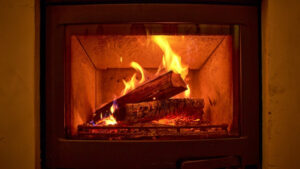
Firetongs, also known as fire tongs, are the unsung heroes of your cozy evenings by the fireplace. These versatile tools play a crucial role in
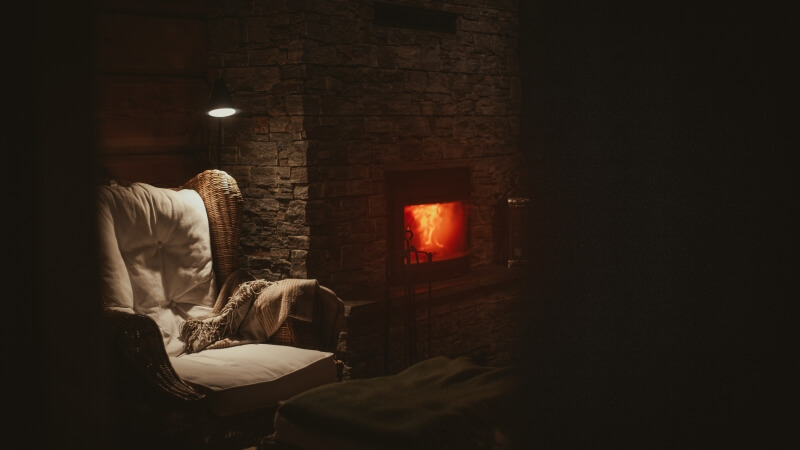
In the realm of fireplace accessories, the importance of a robust and reliable pair of fireplace tongs cannot be overstated. These tools are not merely

The debate between fireplace tongs and fireplace shovels is a perennial topic among fireplace enthusiasts. Each tool plays a crucial role in fireplace management, offering

In the world of fireplace accessories, Fireplace firetongs are more than just functional tools; they are a reflection of style, tradition, and practicality. Among the
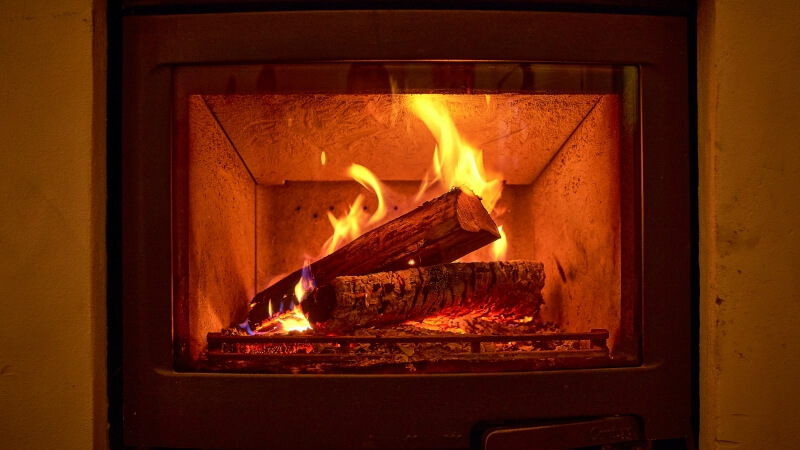
Firetongs, also known as fire tongs, are the unsung heroes of your cozy evenings by the fireplace. These versatile tools play a crucial role in
Copyright © 2024 bonfireplacetongs. All Rights Reserved.